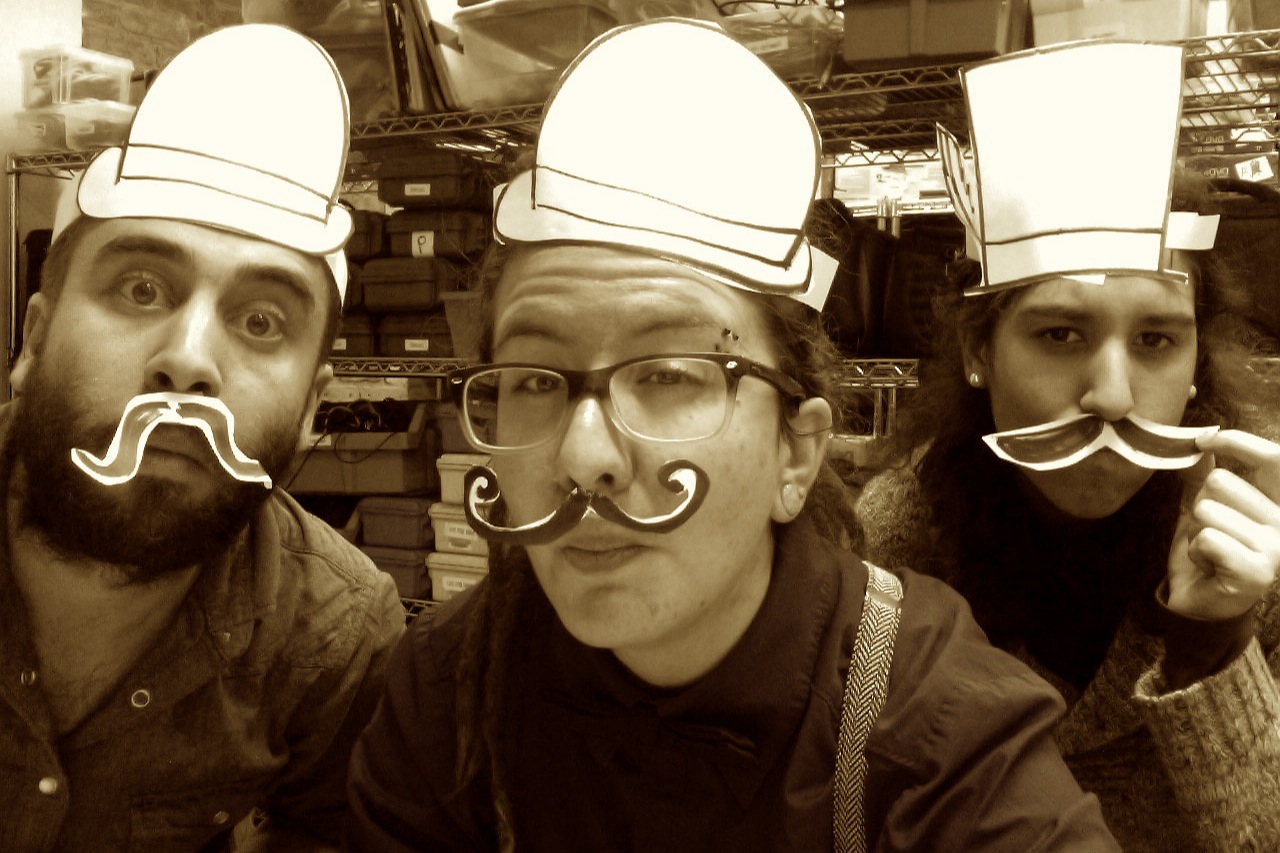
Art Collaborations
[flickr id=”8188494392″ thumbnail=”medium” overlay=”true” size=”original” group=”” align=”none”]
Last week, my friend and classmate Darren Lorenzi and I conducted a series of experiments with the Xbox Kinect controller. We were interested in using the 3D sensor to track our body movements and using that information to control parameters in Ableton Live.
This project was for the class Code/Language. We decided to collaborate on these experiments because we hypothesize that together we are capable of accomplishing more than we would be by our selves. Our hypothesis seemed to have been supported in that class. Collaboration has turned out to be a great asset. Tomorrow, I’m helping out my friends Chelsey and Penelope on an awesome instillation of theirs that involves Infrared sensors, Ardiono micro-controllers, and honey. I’m really excited about it.
So, why collaborate?
Collaboration can be difficult, but there are still a number of reasons collaboration can be a valuable process to consider. Here are a few from an Essay entitled “Collaborative Art Practice and the Fine Art Curriculum” by Dunhill and O’Brien
Collaboration:
1. Helps you develop negotiation & interpersonal skills
2. Helps you develop communication skills
3. Helps you develop team-working skills
4. Builds confidence
5. Strengthens your ability to take on more ambitious projects
6. Allows for the sharing of research methodologies
7. Encourages brainstorming
8. Allows you to learn from others
Collaborative Strategies
What might be some helpful strategies to promote effective collaborations? Muneera Spence is the Chair of Graphic Design at Virginia Commonwealth University, and much of her research lies in the realm of collaboration methodologies. In her course, Graphic Design Collaborative Processes: A Course in Collaboration, she developed the following 7 rules to help with collaboration:
1. Look for common ground: find shared values, consider shared personal experiences, pay attention to and give feedback, be yourself and expect the same of others, be willing to accept differences in perception and opinions.
2. Learn about others: consider their perspectives and needs, appeal to the highest motives, let others express themselves freely.
3. Critique results, not people: do not waste time on personal hostility, make other people feel good, avoid criticism and put downs
4. Give and get respect: show respect for others’ opinions, be considerate and friendly, put yourself in the other person’s shoes, be responsive to emotions, speak with confidence but remain tactful
5. Proceed slowly: present one idea at a time, check for understanding and acceptance of each idea before moving on to the next. Speak in an organized and logical sequence.
6. Be explicit and clear: share your ideas and feelings, pay attention to nonverbal communication, speak clearly and make eye contact, select words that have meaning for your listeners
7. Remember the five “Cs” of communication: clarity, completeness, conciseness, concreteness, and correctness
Orson Welles once described filmmaking as painting with an army. That army is a large part of why he was able to create Citizen Kane. Keith Richards of the Rolling Stones once said, “By myself I’m not that great a guitarist, none of us are, but together we are all right.” I like the sound of that. By myself I can only do so much, but with others, I am capable of creating work beyond my own ability. I’m grateful for the collaborative opportunities that I have already had here at Columbia, and I’m looking forward to many more.
